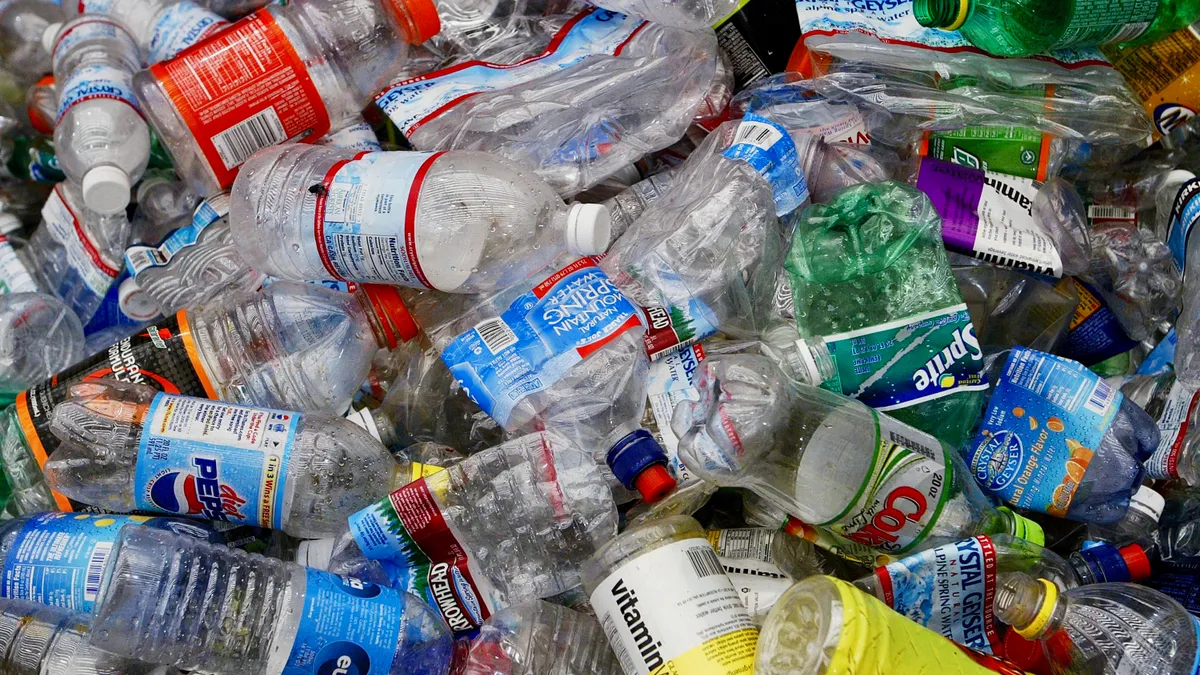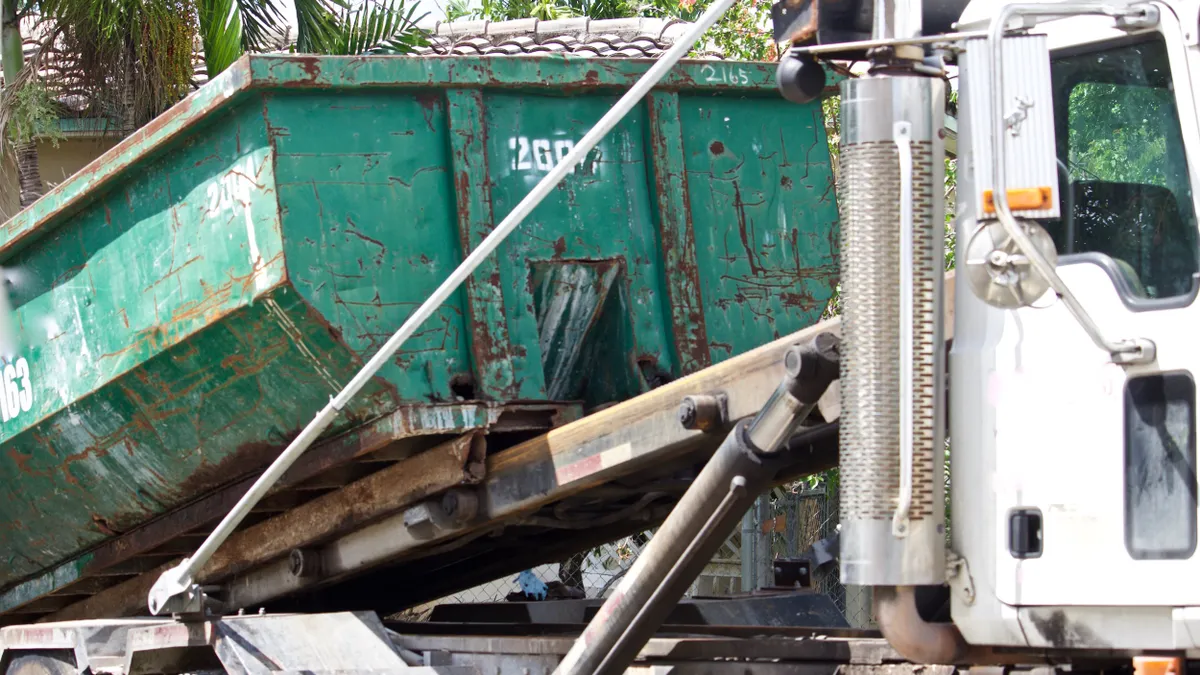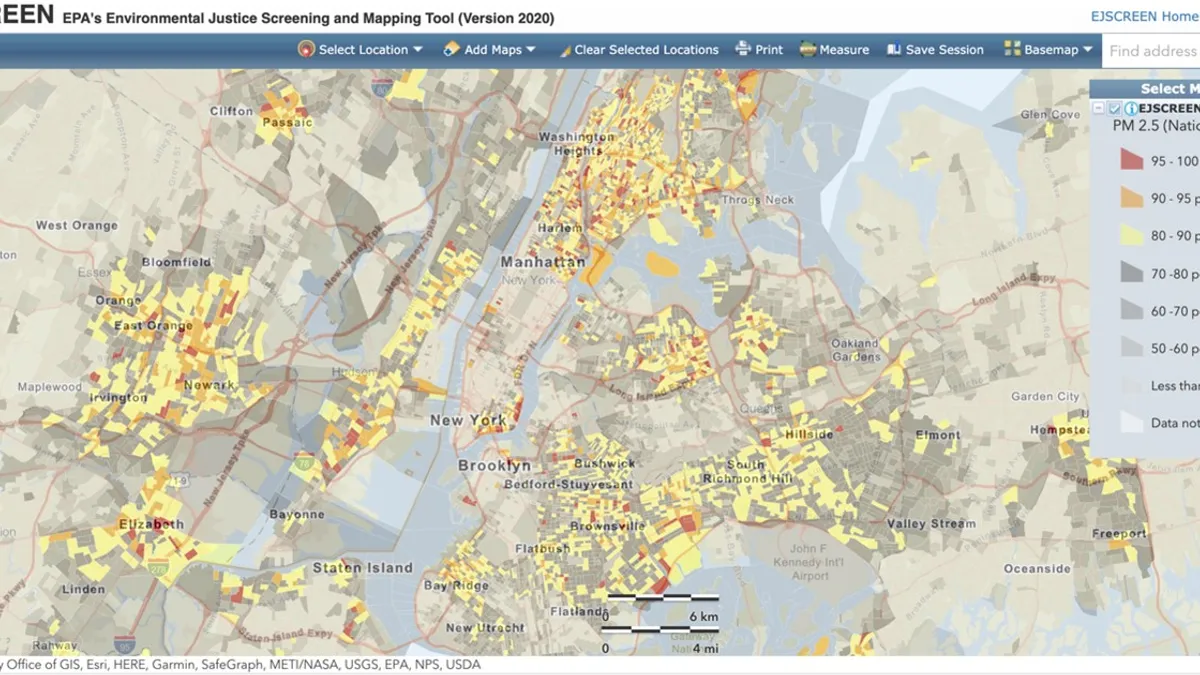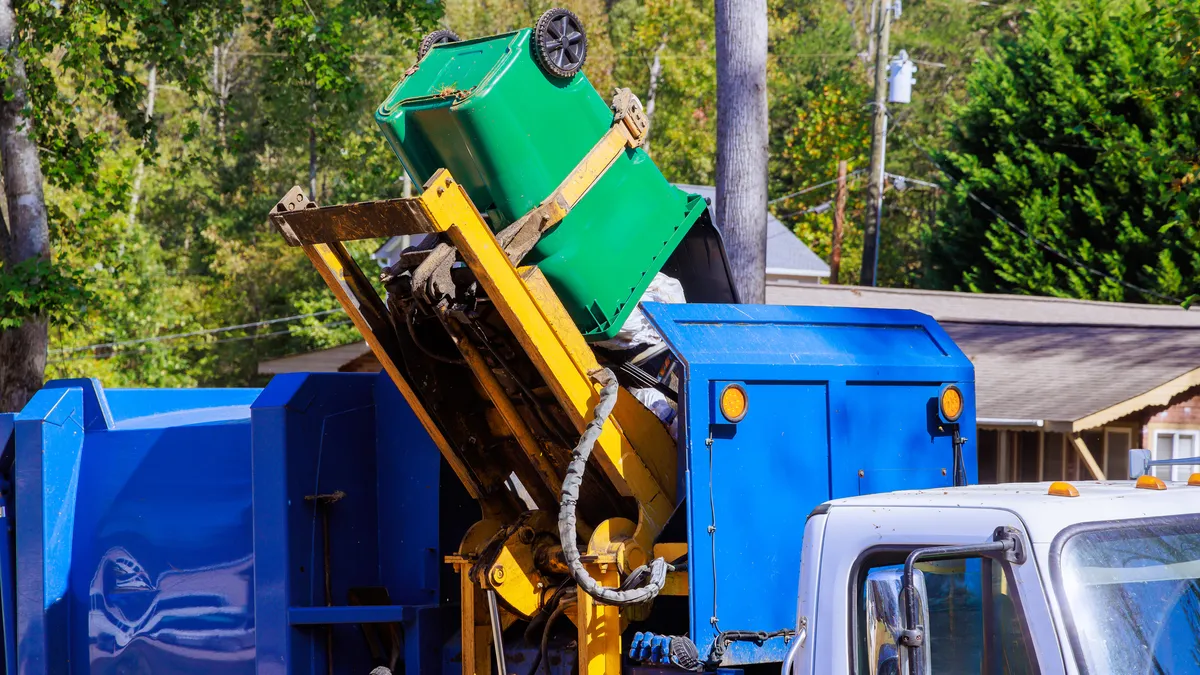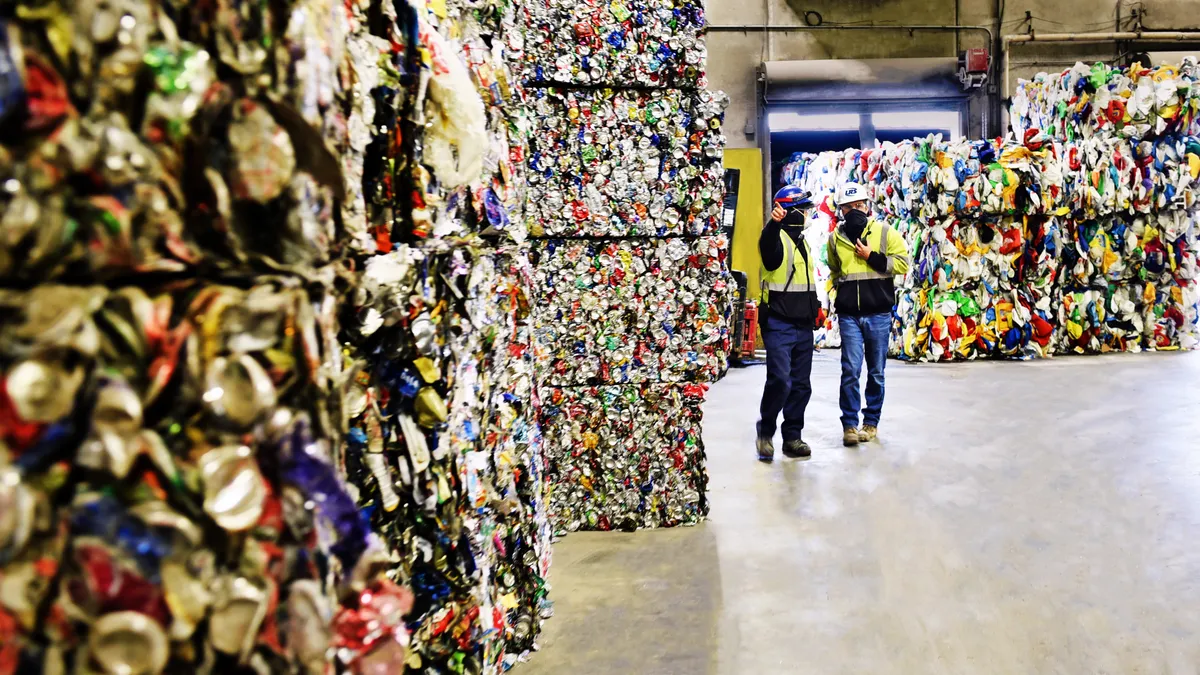Recyclable commodity prices are slumping this fall, including a precipitous drop in PET prices that started earlier this year. Rather than any single reason, experts point to a convergence of logistical factors and economic conditions.
In May, PET beverage bottle and jar prices reached a recent high of almost 40 cents per pound before tumbling for several months, according to RecyclingMarkets.net data published by Resource Recycling. July prices fell 30% month-over-month from June. The price further dropped 61% month-over-month in August to about 10.3 cents per pound. Although curent prices show a slight rise to about 8.5 cents, that’s still far below the 22.8 cents per pound from a year ago.
The PET market is “way lower than it has been, but in the grand scheme of things, I don't believe it is that low,” said Adam Gendell, director of circular ventures at The Recycling Partnership. He said “PET pricing had been astronomically high” recently and it’s important to remember that “it's a commodity market, and weird things happen and it fluctuates.”
RecyclingMarkets.net cites factors including rising fuel costs, recession fears and oversupply for the initial spring dip. Several processing facilities also idled this summer for upgrades or time off and summer generally brings a seasonal supply-demand shift, said Steve Alexander, president and CEO of the Association of Plastics Recyclers.
“It was really a confluence of events and it all seemed to come to a head at the end of June and beginning of July,” he said.
Wild oil price fluctuations also play a role. Recycled PET demand generally increases when oil prices are high, because virgin resin is a petroleum-based product, and dips when virgin is cheaper to manufacture. Early in 2022, geopolitical events including the Russia-Ukraine War sent oil prices soaring, and the U.S. joined global leaders in taking steps to stabilize them.
The Independent Commodity Intelligence Service said in September that rPET demand softness is resulting in a temporary oversupply of material. Long-term, though, the market suffers from supply shortages, which has led to more imports from other North American and Asian countries. Overall plastic scrap imports declined from Q3 2021 through Q1 2022, but then swung back up.
“Import was really available. There was some cheaper flake coming in at that time,” Alexander said. “One thing that we can’t control on our own is the supply of material. Recyclers can only process material that’s made available to them.”
Experts say processors need access to more supply to meet brand sustainability commitments, which generally involve upping the amount of recycled content by years such as 2025 or 2030. But experts also recognize that material pricing lags real-time market conditions.
“It's kind of complicated, seeing as brand demand can be sky high, and it doesn't equate overnight to moving more PET when it's at a cheaper price,” Gendell said. “Everyone is still very voracious for material. Demand for rPET, at least in packaging... is still very, very high.”
Experts say another caveat is the lack of accountability to ensure brands fulfill their commitments to purchase more recycled resins, especially when prices are in flux. Not all recycled content goals seem achievable in the given time frames when accounting for market conditions and how much product actually is available, said Chaz Miller of Miller Recycling Services.
“I think you have to distinguish between the sustainability people and the financial people,” Miller said. “The sustainability people tend to be the ones making all these grand promises. Frankly, I don't think they've given any thought whatsoever to the realities of recycling or to the price of recycled resins.”
Miller compiles regional recycling market reports for the Northeast Recycling Council and pointed out the regional differences in current material prices, including PET.
“The Northeast tends to have slightly better prices than other parts of the country,” he said. “There are significant regional variations — prices tend to be a little softer on the West Coast than the East Coast.”
September PET prices in the Northeast came in at nearly 8.3 cents per pound, which is up 10%, or three-quarters of a cent, month-over-month. Still, the price is down 68% year-over-year and 82% (more than 38 cents) since May’s peak.
Slower consumer spending nationwide is one factor tamping down PET demand. About 54% of recycled PET is used to manufacture clothing textiles and carpet fibers, according to the National Renewable Energy Laboratory, so reduced consumer spending on clothing, construction and home improvments plays a role. The Federal Reserve’s numerous interest rate increases over the last six months to tame inflation likewise affect purchasing and demand.
“With PET being a really commonly recycled commodity, the demand for some of the products that it’s used in is starting to slow a little bit,” said Bret Biggers, senior economist at the Institute of Scrap Recycling Industries.
The International Monetary Fund published its most recent twice-yearly outlook this month. It says global economic activity “is experiencing a broad-based and sharper-than-expected slowdown.” Similarly, the World Trade Organization revised its outlook this month and projects a sharp slowdown in world trade growth next year. ISRI highlights the most recent Producer Price Index numbers for the recycling industry that show all commodities were down in September except plastics, which was 11.3% higher than September 2021.
“All recyclable commodities are having a lull right now,” Biggers said. “Over the next six to eight months, it's going to be difficult for recycled commodities, including PET.”
ISRI anticipates more mergers and acquisitions in the coming months as plastic and other recyclers try to mitigate inflationary effects and high operating expenses. Just this month, for example, plastic manufacturer Aurora Plastics announced a merger with custom resin compound manufacturer Enviroplas.
Gendell is among those who anticipates that in hindsight, the current pricing volatility will be a short-term blip on the PET radar.
“I don't feel like the market price right now is going to be any kind of long-term disruption to PET circularity,” Gendell said. “There’s reasons for optimism.”



